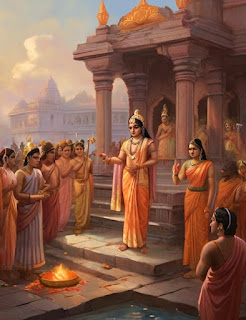Mahalaxmi Pujan: Invoking the Divine Goddess of Wealth
Introduction:
Mahalaxmi Pujan, also known as Mahalaxmi Vrat or Lakshmi Puja, is a significant Hindu festival dedicated to Goddess Mahalaxmi, the embodiment of wealth, prosperity, and abundance. This article explores the cultural and spiritual significance of Mahalaxmi Pujan, highlighting the rituals, customs, and fervent celebrations that take place during this auspicious occasion.
Goddess Mahalaxmi: The Divine Bestower of Wealth:
Goddess Mahalaxmi, also known as Goddess Lakshmi, is venerated as the bestower of wealth, fortune, and prosperity. She is revered as the consort of Lord Vishnu, the preserver of the universe, and symbolizes the divine energy that sustains and nourishes all aspects of life. Mahalaxmi Pujan is celebrated with great devotion and enthusiasm in various regions of India, particularly during the autumn season.
The Significance of Mahalaxmi Pujan:
Mahalaxmi Pujan holds immense significance in Hindu culture as it signifies the arrival of Goddess Mahalaxmi, showering her blessings upon devotees and bringing wealth and abundance into their lives. The festival is observed to seek the grace of the goddess and to express gratitude for the prosperity and blessings bestowed upon families and communities.
The Mahalaxmi Pujan Preparations:
Months before Mahalaxmi Pujan, families and communities prepare for the festival with great zeal and dedication. Homes and places of worship are cleaned and adorned with intricate rangoli designs and vibrant decorations. The centerpiece of the puja is the sacred idol or image of Goddess Mahalaxmi, often crafted from clay or metal and beautifully adorned with jewelry and flowers.
Invoking Goddess Mahalaxmi:
On the day of Mahalaxmi Pujan, families and devotees rise early in the morning to perform the sacred rituals. Traditional hymns, prayers, and devotional songs are chanted to invoke the presence of Goddess Mahalaxmi. Offerings of fresh flowers, fruits, sweets, and incense are made as a gesture of reverence and devotion.
The Lighting of Diyas:
One of the most captivating aspects of Mahalaxmi Pujan is the lighting of numerous oil lamps or diyas, illuminating homes and temples. The radiant glow of the diyas is believed to invite the goddess's divine energy and to drive away darkness, signifying the victory of light over darkness and wisdom over ignorance.
The Lakshmi Puja Rituals:
The puja rituals of Mahalaxmi Pujan vary from region to region, but they all aim to honor and seek the blessings of the goddess. In some places, devotees observe a day-long fast as an act of devotion and self-discipline. The fast is broken after performing the puja, and a sumptuous meal is shared with family and friends.
Community Celebrations:
Mahalaxmi Pujan is not just a festival observed within the confines of homes; it is also celebrated with grandeur in public spaces and temples. Elaborate processions, cultural events, and social gatherings are organized to mark the occasion. The festival fosters a sense of community spirit, bringing people together to rejoice in the blessings of Goddess Mahalaxmi.
The Symbolism of Goddess Mahalaxmi:
Goddess Mahalaxmi is depicted with four hands, symbolizing her divine attributes - dharma (righteousness), artha (wealth), kama (desire), and moksha (liberation). She stands or sits on a lotus, signifying purity, grace, and the transcendence of material desires. The image of Goddess Mahalaxmi embodies the essence of prosperity and abundance in both material and spiritual realms.
Mahalaxmi Pujan and Social Impact:
Mahalaxmi Pujan transcends religious boundaries and unites people from diverse backgrounds. It fosters a sense of unity and cultural harmony, as people come together to celebrate the festival with joy and devotion. The festival also serves as a reminder of the value of sharing and caring for those in need, as devotees often extend their blessings by giving alms and food to the less fortunate.
Conclusion:
Mahalaxmi Pujan is a vibrant and spiritually enriching festival that celebrates the divine energies of Goddess Mahalaxmi and the abundance she bestows upon her devotees. The festival instills a sense of gratitude, devotion, and unity among people, encouraging them to seek prosperity and wealth in both material and spiritual aspects of life. As devotees light the diyas and offer their prayers, they are reminded of the timeless wisdom and divine grace of Goddess Mahalaxmi, who continues to be a beacon of hope and prosperity for generations to come.








No comments:
Post a Comment